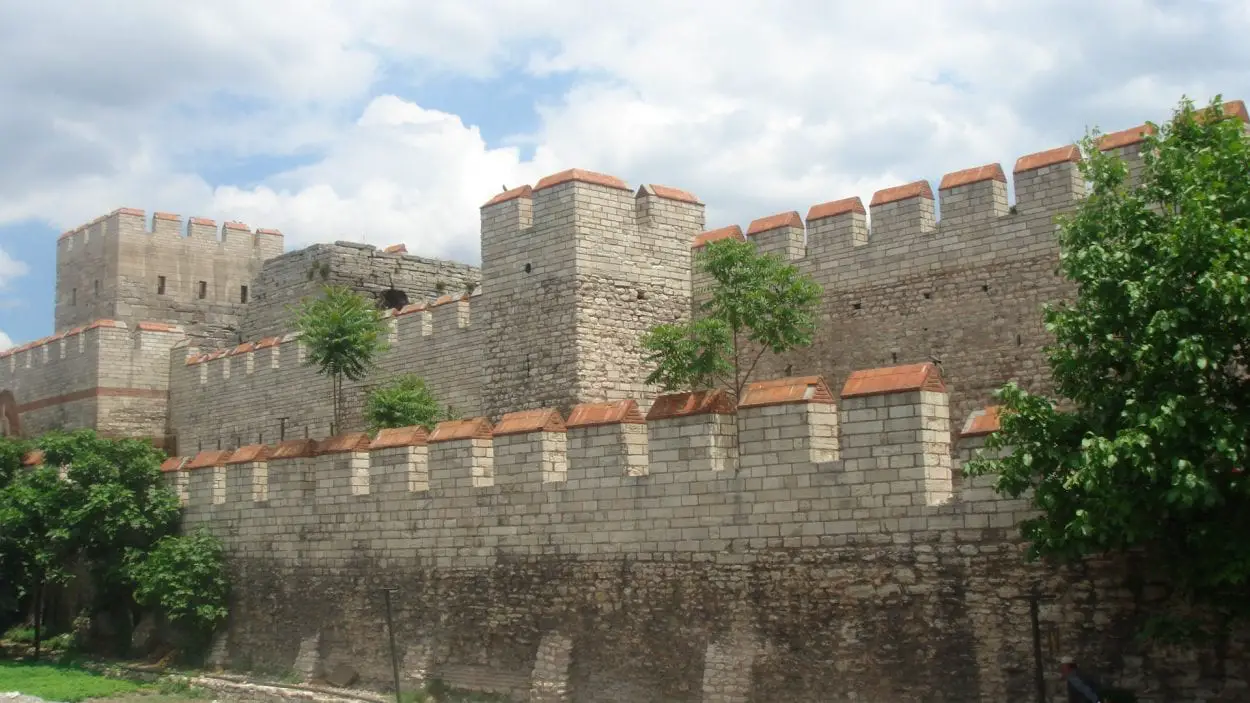The Rus’ Siege of Constantinople occurred in AD 860, in which Byzantine and Western European sources document an expeditionary force of the Rus’ Khaganate that tried to conquer the centre of the Byzantine Empire.
The Rus’ Khaganate, also Russkiy Kaganate was a state, or a cluster of city-states in present-day Russia, comprised of a multi-cultural society consisting of Slavic, Turkic, Baltic, Finnic, Hungarian, and Norse peoples, although the scholarly consensus suggests that the Rus’ originated in eastern Sweden around the eighth century, and that their name has the same origin as Roslagen in Swedish derived from an Old Norse term for “the men who row”.
In AD 860, a fleet of around 200 Rus’ vessels carrying up to 5,000 soldiers sailed into the Bosporus and started attacking the suburbs of the imperial capital. According to an oration written by the ecumenical patriarch Photios I of Constantinople, the attack by the “unknown people” or the “obscure people” was “like a thunderbolt from heaven”, and was as sudden and unexpected “as a swarm of wasps”.
Although debated, the casus belli that led to the invasion may have resulted from the construction of the Sarkel fortress by Byzantine engineers in the AD 830s or 840s for their ally the Khazars. The fortress restricted the Rus’ trade route along the Volga-Don portage, which was used to cross from the Black Sea to the Volga, and thence to the Caspian and Baltic.

Realising the impending threat, the city prefect Nicetas Oryphas sealed the city gates, relying on the extensive Roman city walls and fortifications to repel the advance, but in doing so left the outer settlements and hinterland unprotected.
At the time, the bulk of the Byzantine forces led by Emperor Michael III were engaged in repelling the Abbasid advance in Asia Minor, and the Navy was occupied fighting Arabs in the Aegean Sea and against Danish Viking raids in the Mediterranean.
Lacking the resources and siege equipment to take the city, the Rus’ advanced into the Sea of Marmora and plundered the monasteries on the Isles of the Princes, capturing servants of the exiled former Patriarch Ignatius of Constantinople and dismembered them with axes.
After months of raiding, the Rus’ withdrew, although contemporary accounts leave no clue as to why or the resulting outcome of the siege.
Later sources attribute the Rus’ retreat to the return of Emperor Michael III, who along with Photios placed a veil of the Theotokos into the sea, giving rise to a tempest that dispersed the Rus’ fleet (although Photius’s oration neither mentions Michael III’s return to the capital nor the miracle with the veil).
Header Image Credit : Nicholas Roerich – Public Domain





